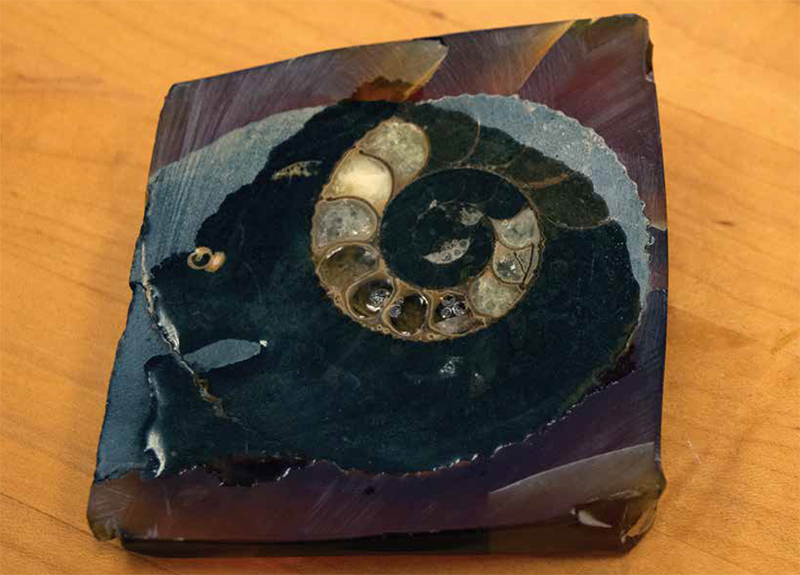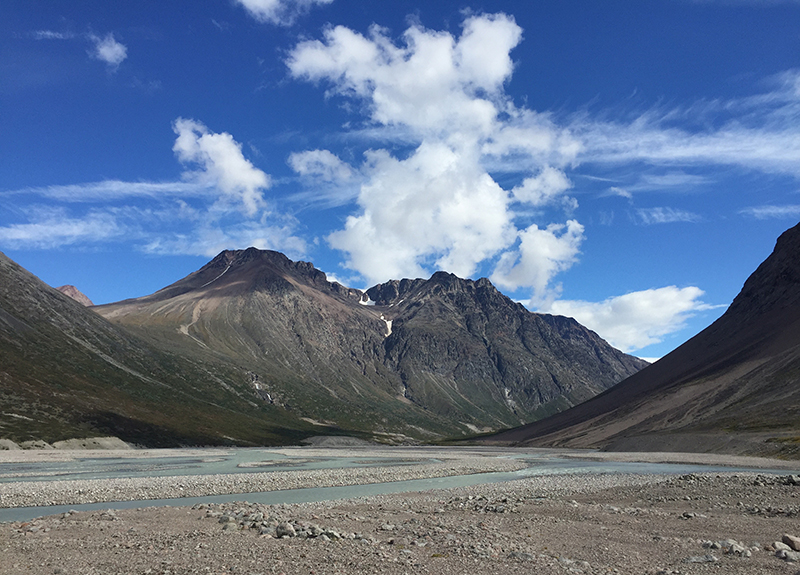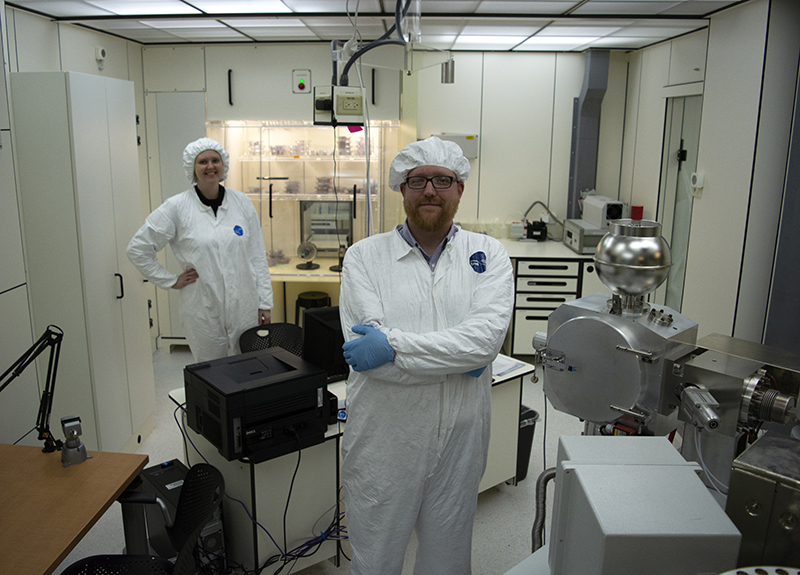Northwestern postdoc studies the past as a proxy for modern-day ocean acidification
By Valerie Nikolas (Medill graduate student), Photos by Julianne Beck (ISEN) // Originally published by Northwestern's Office for Research
Shells — even those some 66 million years old — can tell us a lot about climate change, says Ben Linzmeier.
Linzmeier studies bivalves, aquatic mollusks that include oysters, clams, mussels, and scallops that lived through the extinction of the dinosaurs. Because these creatures use chemicals from their environments as building blocks for their shells, studying the chemical composition of those remains can suggest what the environment was like when these animals were alive. Such insights, in turn, tell researchers more about the earth’s history and about how the environment may change in the future.
Linzmeier has pursued this research since joining Northwestern’s Earth and Planetary Sciences Department as a postdoctoral fellow in 2017. The investigations expand on dissertation work he completed at the University of Wisconsin–Madison, where he studied new ways to determine the biology and behavior of ancient cephalopods (e.g. squids). His current research is supported by the Ubben Program for Climate and Carbon Science, which focuses on developing interdisciplinary approaches to study climate system dynamics and develop solutions for climate adaptation and mitigation.
Using an extremely accurate form of chemical measurement developed by Northwestern Professor Andrew Jacobson, Linzmeier measures the ratio of different masses of calcium in the samples. These different masses of the same element are known as isotopes. They help scientists learn more about environmental conditions, like temperature or ocean pH, during Earth’s distant past.
“The work is extremely painstaking, given the focus on quality over quantity,” says Jacobson, Earth and planetary sciences, director of Northwestern’s Environmental Sciences Program, and one of Linzmeier’s advisers. “It’s not the kind of research that can be completed quickly. Each sample is processed through a manual procedure to get it ready for analysis.”
To measure the calcium’s isotope ratio, Linzmeier uses a tool called a thermal ionization mass spectrometer. First, he isolates the calcium in a metal-free clean lab and puts it on a filament. Then the machine heats the filament, causing ionization. Calcium is accelerated away from the hot filament and then flies through a magnetic field in the mass spectrometer, which separates heavy from light isotopes using the same forces that are felt when driving around curves. Beams of atoms then crash into cups creating electrical signals used to measure the number of atoms of each mass.
Knowing the calcium isotope ratio of shells at given points in time allows Linzmeier to study changes in ocean pH, thus giving him a proxy record, an indication of the environmental conditions that contributed to the most recent mass extinction.
Between February and October 2018 Linzmeier painstakingly analyzed about 40 fossilized shells from Seymour Island, an uninhabited land mass off the coast of Antarctica.
“We’re looking at resiliency over generational timescales,” Linzmeier says. These timescales are thousands of years in “deep time” — the 500,000 years before the dinosaurs went extinct and the 500,000 years after, when the Deccan Traps volcanoes (in modern-day India) erupted frequently.
Understanding how proxy records preserve environmental characteristics and figuring out how ocean acidification records work in deep time guides researchers’ understanding of similar trends happening today.
“The changes that happened then might be similar magnitude to what’s happening today, but now it’s happening a lot faster,” Linzmeier says. “Understanding how bivalves can respond — or not — to acidification, is not insignificant.”
Bivalves are economically important — the market value of their fisheries is an estimated $23 billion, but their full economic value is much higher due to profits from secondary products and services like shucking and packaging houses. Studying bivalves’ responses to environmental stimuli is not only integral to the immediate impact on fisheries, but also their impact on the oceanic ecosystem as a whole.
Linzmeier’s research is made possible by the Ubben Program for Climate and Carbon Science, a part of the Institute for Sustainability and Energy at Northwestern (ISEN). The Ubben Program was established in 2017 through a $5.5 million gift from Jeff (KSM ’87) and Laurie Ubben. Jeff is also a member of Northwestern’s Board of Trustees. The Ubben Program aims to improve understanding of global climate system dynamics and evaluate low- and zero-carbon alternatives to fossil fuels.
“It’s really great because the Ubben Program is supporting basic science, like my research,” says Linzmeier. “It’s helping support my professional development as a scientist, working on very different problems than I was thinking about before, and learning new techniques.”
Linzmeier intends to submit his research to the journal Geology later this year and his co-authors — including Earth and planetary sciences faculty Jacobson, Matthew Hurtgen, and Brad Sageman, as well as research associate Meagan Ankney — are reviewing a final draft of the results.






